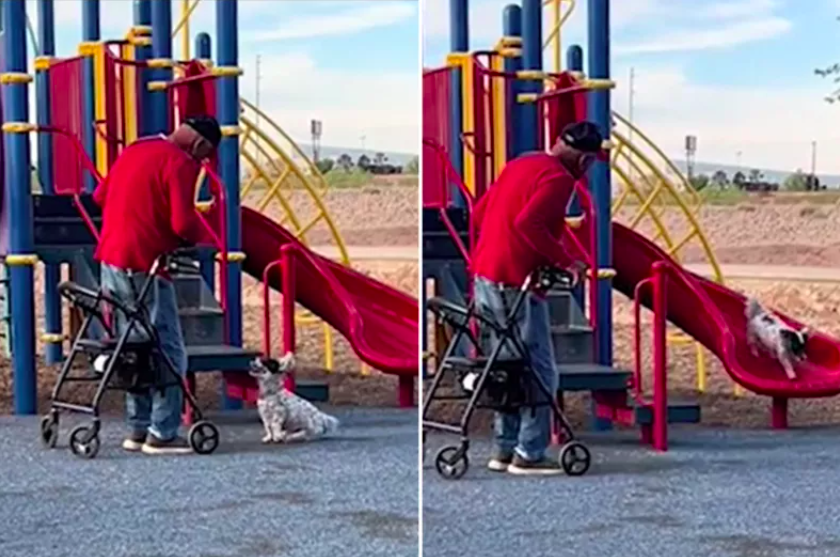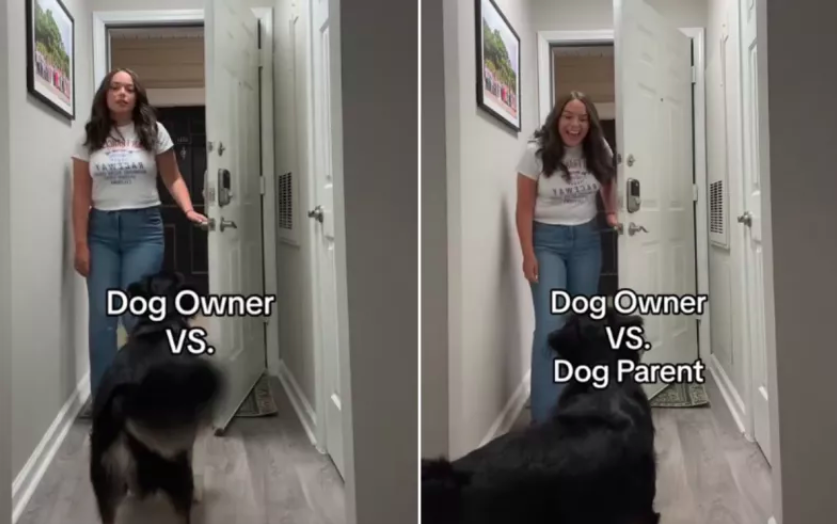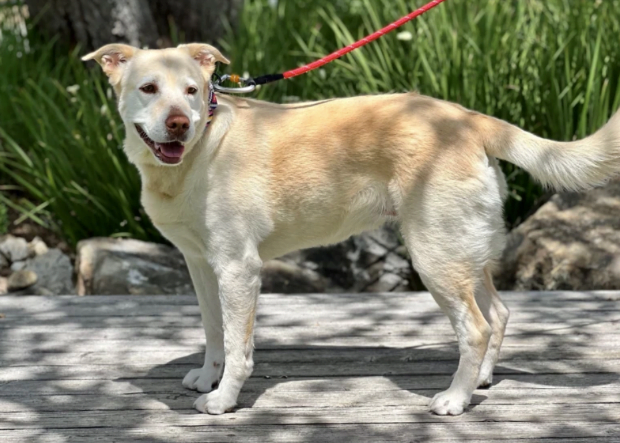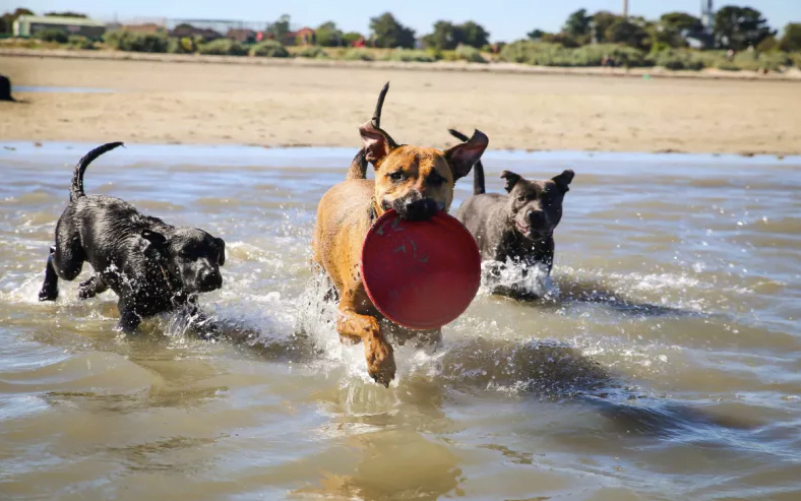Pet Care
Dazzling Dobies: Unleashing The Power And Grace Of Doberman Pinschers

Dazzling Dobies: Unleashing The Power And Grace Of Doberman Pinschers
Whether you are thinking of adopting a Doberman Pinscher as a pet or are thinking of getting one for yourself, there are several things you should know.
From health to temperament, you should be familiar with the breed’s history.
You should also be aware of the common eye and health conditions. Listed below are some of the common issues and how to treat them.
Doberman Pinscher Health
While the Doberman Pinscher breed generally has a good health record, some problems do occur more commonly than in other breeds.

If you are considering buying a Doberman Pinscher, you should ask your breeder about the prevalence of these problems in their ancestors.
You should also ask the breeder about the testing methods and symptoms associated with certain problems. Cardiovascular disease (CVD), cancer, and CVI are three common killers of the Doberman breed.
Doberman Pinscher’s health is largely based on genetics, so some genetic traits are more susceptible to a particular disease.
Doberman pinschers prone to color dilution alopecia have a higher chance of developing this condition than other colors. This disease can cause a dog to lose its hair, crust its nose and even develop a painful rash on its toes.
Additionally, dogs with lighter skin colors are prone to developing this disorder, which can cause the dog to go bald by the age of two or three years.

Doberman Pinschers have a higher risk of developing bloat, a type of emergency gastrointestinal syndrome.
Other health concerns include odd neuromuscular disorders like head tremors, narcolepsy, and polyneuropathy, an inherited disease of the central nervous system that causes spasticity in the rear legs.
Some dogs also suffer from eye diseases such as progressive retinal atrophy or dysplasia, which are considered “cherry eye” in appearance.
Cardiomyopathy is a heart disease that affects many dog breeds, but Dobermans are especially susceptible to it. This disease makes the heart weak and enlarged, making it unable to pump blood properly.
It can lead to collapse and weakness, and ultimately, death. Early symptoms of cardiomyopathy include decreased appetite, depression, and exercise intolerance.
However, despite these early symptoms, many Doberman Pinschers have no signs and symptoms, and yearly exams are necessary.

In addition to getting annual exams, yearly electrical heart screening is important.
It is also important not to breed any dogs with cardiomyopathy because puppies can still develop the disease from parents that do not have it.
Another cause of chronic pain and lameness in Dobermans is hip dysplasia, which is a common breed problem.
According to the Orthopedic Foundation of America, six percent of Doberman hips were dysplastic. Similarly, the breed is susceptible to von Willebrand’s disease, a type of blood clotting disorder.
Almost half of Doberman Pinschers carry this genetic disorder, and an easy DNA test can tell if your dog is suffering from the disease.
Doberman Pinscher Temperament
The Doberman Pinscher temperament varies depending on its breeding and temperament.

It can be aggressive, protective, or shy and requires extensive socialization and training. As a result, Doberman Pinschers can be intimidating and fearful of strangers.
Their temperaments can make them difficult to live with, but they are very lovable and loyal dogs. To find out what kind of temperament you want in your puppy, interact with it as much as you can.
The Doberman Pinscher temperament can be intimidating at first, but once you’ve adjusted to the breed’s high energy level, you’ll be amazed at how mellow it is.
The breed also gets along with other pets, so it’s a good idea to introduce it to other pets and children while it’s still a puppy.
However, two male Dobermans can be aggressive toward one another, which can lead to dog fights and injuries. Female Dobermans are much easier to train and are gentler around children.
The Doberman Pinscher’s aggressive behavior can be corrected by early socialization. Early introduction to other dogs is recommended, but only with friendly dogs.

Doberman Pinschers should be introduced to other pets, including other dogs of the same size and energy level as their own.
Small dogs should be introduced to Doberman Pinschers gradually, and owners should praise positive interactions. Be sure to supervise the interactions between Dobermans and other pets.
The Doberman Pinscher is a very smart breed and can learn to obey its owner.
It is important to start training early, as the Doberman Pinscher will become muscular and sturdy. Training your puppy is essential, as the breed is sensitive and does not respond well to harsh treatment.
Once your puppy is about 10-12 weeks old, enroll him or her in a puppy training class. The sooner you begin, the sooner you’ll have a pup with a positive temperament!

A Doberman Pinscher’s temperament will depend on the owner’s personality and lifestyle. They need constant mental stimulation, and they thrive in active, social households.
A dominant owner will be best suited for a Doberman Pinscher. A passive family isn’t suitable for this breed. So, be sure to choose a family that will encourage a healthy amount of exercise.
Doberman Pinscher temperament will also help your dog to be a loyal companion.
Doberman Pinscher Training
Among other important dog commands, the “come” command is essential to Doberman Pinscher training.

This command can be useful to save the puppy from danger. Training a puppy to focus on his master and not on things around him requires early attention training.
Playing with your dog will reinforce this bond and help you get your puppy to focus on you more. Once this command is mastered, it is time to move on to other tasks.
The Doberman pinscher breed is incredibly intelligent and eager to please. Their high levels of energy and loyalty make them a great choice for households that want a loving companion and a working dog.
Without training, they can become destructive or bored. The best way to prevent any destructive behavior at home is to enrich your dog’s life with interesting activities and experiences.
While these dogs are remarkably trainable and intelligent, they can be difficult to raise.
Start early with Doberman pinscher puppy training, and you’ll be able to develop a loyal and obedient dog that is sure to please you and your family.

The Doberman Pinscher is one of the only breeds in the AKC’s Working Group. The German tax collector Louis Dobermann developed the Doberman pinscher as a companion dog.
Known for their loyalty, fierce nature, and love for people, they make wonderful companions.
However, successful Doberman Pinscher training begins with a puppy from a good breeder. The best breeder for your new pet is one that has proven itself in the field.
Early socialization is essential for your Doberman Pinscher training. Socialization involves introducing your new pet to society.
Socialization teaches your puppy how to behave around other dogs, people, and animals.
Young puppies may encounter frightening experiences and situations if they have been raised in a sheltered environment.
Socialization is a key component of developing a reliable companion. So, don’t delay socialization. Start training your dog today!
Doberman Pinscher Eye Conditions
One of the most common Doberman Pinscher eye conditions is glaucoma.

Glaucoma is a painful eye condition that can lead to blindness if left untreated. Some of the signs of glaucoma include squinting, watery eyes, and redness in the whites of the eyes.
However, the pain in dogs is not usually felt by owners, and it often looks like a dog has been stabbed in the eye with an ice pick.
If you see any of these signs, it’s time to get your dog to the veterinarian. The good news is that there are several ways to diagnose a Doberman Pinscher’s eye disease.
In the meantime, you can use simple DNA tests to diagnose some of the most common eye conditions in dogs. For example, PRA can be diagnosed by DNA, but it’s not specific to the Doberman breed.
In addition, not every form of PRA has a DNA marker. Therefore, DNA testing for eye disease is not yet common in Dobermans.
Another common disease in Doberman Pinschers is hypothyroidism, which is a condition in which the body doesn’t produce enough thyroid hormone.

A pet with hypothyroidism will have crusty skin and hair loss and may even have increased susceptibility to other skin diseases.
In addition to eye diseases, Dobermans may be prone to cataracts, a type of cherry eye.
Dobermans have an extremely high rate of vision loss, which can make them difficult to handle. Fortunately, most of the cases are treatable with the help of glasses and contacts.
Proper care can prevent these eye conditions and improve your Doberman’s quality of life. But don’t delay! Your Doberman needs lots of exercise to remain healthy.
They can take on the role of the family guard. Doberman Pinschers may also develop some type of congenital cataract. Congenital cataracts are different than normal cataracts.
Although they affect the dog’s vision, they are not classified by grade. A dog with a congenital cataract may have problems with breeding.
However, this is unlikely to have any effect on your Doberman’s ability to breed.
Therefore, you should seek care for your Doberman Pinscher before bringing him into a shelter or home.
Questions People Also Ask: (FAQs)
Are Doberman Pinschers good family dogs?
Yes, Doberman Pinschers are known to be loyal, intelligent, and affectionate family dogs. They are protective of their family members and can be excellent companions when properly socialized and trained.
How much exercise does a Doberman Pinscher need?
Doberman Pinschers are an energetic breed that requires daily physical exercise and mental stimulation. Ideally, they should have at least one hour of vigorous exercise per day, which can include walks, runs, playtime, or participation in dog sports.
Are Doberman Pinschers easy to train?
Dobermans are highly intelligent and eager to learn, making them relatively easy to train. They respond well to positive reinforcement training methods and consistency. Early socialization and obedience training are crucial for a well-behaved Doberman.
What is the average lifespan of a Doberman Pinscher?
The average lifespan of a Doberman Pinscher is approximately 10 to 12 years. Proper care, including a balanced diet, regular exercise, and routine veterinary check-ups, can help ensure a long, healthy life for your Doberman.
Do Doberman Pinschers have any common health issues?
Doberman Pinschers can be prone to certain health conditions, such as hip dysplasia, dilated cardiomyopathy, von Willebrand’s disease, and cervical vertebral instability (Wobbler Syndrome). Regular veterinary check-ups and preventative care can help identify and manage these conditions early.
Are Doberman Pinschers aggressive?
Dobermans have a reputation for being aggressive, but this is often due to poor breeding, inadequate socialization, or mistreatment. When properly bred, socialized, and trained, Dobermans are typically friendly, loyal, and protective dogs that can make excellent family companions.
Do Doberman Pinschers require a lot of grooming?
Dobermans have short, smooth coat that requires minimal grooming. Regular brushing with a soft-bristle brush or grooming mitt can help remove loose hair and keep their coat looking its best. Additionally, regular nail trimming, ear cleaning, and dental care are essential for maintaining their overall health.
We appreciate you for taking the time to read!
Finally, we hope you found this article interesting? And what do you think about ”Dazzling Dobies: Unleashing The Power And Grace Of Doberman Pinschers!?”
Please you should feel free to share or inform your friends about this article and this site, thanks!
And let us know if you observe something that isn’t quite right.
Pet Care
Heartwarming Moment: Man and Dog Share Playtime on the Slide

Heartwarming Moment: Man and Dog Share Playtime on the Slide
Introduction: A Tale of Joy and Connection
In a world often filled with hustle and bustle, it’s the small, heartwarming moments that remind us of the beauty of life. Recently, a touching scene unfolded at a playground in El Paso, Texas, where a man and his canine companion shared a moment of pure joy on a slide. This heartwarming interaction captured the essence of the special bond between humans and their furry friends, captivating the hearts of millions across the globe.
A Playful Encounter
On a typical afternoon, Jennifer Lopez, accompanied by her children, stumbled upon a heartwarming sight at a local playground. Instead of children frolicking on the equipment, it was a man and his beloved dog who took center stage. The man, exuding happiness, encouraged his furry friend to ascend the slide before gleefully sliding down, accompanied by cheers and treats from his devoted owner.
Capturing the Moment
Moved by the simplicity and beauty of the scene, Jennifer Lopez shared the heartwarming encounter on TikTok, where it quickly gained traction, resonating with viewers far and wide. In just a matter of days, the video amassed millions of views and garnered an outpouring of love and admiration for the undeniable bond between the man and his canine companion.
A Lesson in Appreciating Life’s Simplicity
For Jennifer Lopez, the encounter served as a poignant reminder of the beauty found in life’s simplest pleasures. Amidst personal struggles and moments of despair, witnessing the sheer joy radiating from the man and his dog instilled a newfound appreciation for life’s blessings and the power of unconditional love.
Community Response and Reflections
The viral TikTok video sparked an overwhelming response from viewers, with thousands expressing gratitude for the heartwarming moment shared by Jennifer Lopez. Comments flooded in, praising the unwavering bond between the man and his furry friend and highlighting the profound impact of their playful interaction.
FAQs (Frequently Asked Questions)
What inspired Jennifer Lopez to share the heartwarming encounter on TikTok?
Jennifer Lopez was deeply moved by the joyful interaction between the man and his dog at the playground, prompting her to share the heartwarming moment on TikTok to spread positivity and uplift others.
How did the viral video impact Jennifer Lopez?
The viral video served as a source of inspiration and hope for Jennifer Lopez, offering a fresh perspective on life’s challenges and reminding her of the beauty found in simple, everyday moments.
What message did viewers take away from the heartwarming encounter?
Viewers were touched by the unconditional love and joy exhibited by the man and his dog, emphasizing the importance of cherishing life’s simple pleasures and fostering meaningful connections with loved ones, both human and animal.
How did the viral video contribute to the conversation surrounding mental health and well-being?
The heartwarming encounter depicted in the viral video served as a beacon of hope for individuals struggling with mental health issues, offering a reminder of the healing power of love, companionship, and moments of joy.
What does the heartwarming encounter symbolize?
The heartwarming encounter symbolizes the profound bond between humans and animals and underscores the significance of finding joy and connection in everyday experiences, even amidst life’s challenges.
We appreciate you for taking the time to read this article!
Finally, we hope you found this article interesting? And what do you think about ”Heartwarming Moment: Man and Dog Share Playtime on the Slide!?”
Please feel free to share or inform your friends about this article and this site, thanks!
And let us know if you observe something that isn’t quite right.
Source: Newsweek
Pet Care
Understanding the Difference: Dog Parent vs. Owner

Understanding the Difference: Dog Parent vs. Owner
Embracing the Role: Dog Parenting vs. Ownership
In a heartfelt exploration of the human-canine bond, Shelby Susnick from Atlanta, Georgia, sheds light on the nuanced difference between being a dog parent and a dog owner. While many cherish their pets as cherished companions, Susnick emphasizes a deeper connection that transcends mere ownership.
Family Dynamics: Viewing Dogs as Family Members
For Susnick, the distinction lies in how one perceives their furry companion—are they simply an animal one owns, or an integral part of the family? Dog parents often prioritize their pet’s well-being, with schedules revolving around their canine companion’s needs, such as ensuring they are not left alone for extended periods.
Love Beyond Ownership: Dogs as Family
Susnick’s bond with her dog Russell exemplifies this sentiment. Russell, a rehomed dog who survived parvovirus thanks to Susnick’s love and care, is more than just a pet; he’s her son. Through her TikTok videos, Susnick shares glimpses of the joyous life Russell leads, filled with love, playtime, and adventures.
Defining Moments: A Video on Dog Parenting
In a recent TikTok video, Susnick addresses the distinction between being a dog parent and an owner. Through relatable scenarios, she illustrates how dog parents prioritize empathy, companionship, and understanding, viewing their pet as a cherished member of the family rather than a possession.
Community Response: Embracing Dog Parenthood
Susnick’s video resonated deeply with dog lovers worldwide, sparking conversations about the evolving role of pet ownership. With over 1.3 million views and growing, the video has inspired many to reflect on their relationship with their furry companions and strive to embody the qualities of a dog parent.
Frequently Asked Questions (FAQs)
What distinguishes a dog parent from a dog owner?
A dog parent views their canine companion as a cherished family member, prioritizing empathy, companionship, and understanding.
How does Shelby Susnick’s experience with her dog Russell exemplify dog parenthood?
Susnick’s bond with Russell, a rehomed dog who survived parvovirus, illustrates the deep love and commitment of a dog parent beyond mere ownership.
What prompted Susnick to create the TikTok video on dog parenting?
Susnick’s desire to address misconceptions and highlight the unique bond between dogs and their human companions inspired her to create the video.
Why did Susnick’s video resonate with viewers, garnering over 1.3 million views?
The video struck a chord with dog lovers worldwide, sparking discussions about empathy, companionship, and the evolving role of pet ownership.
How can individuals transition from being dog owners to dog parents?
By prioritizing empathy, spending quality time with their pets, and viewing them as integral family members, individuals can cultivate a deeper connection with their canine companions.
We appreciate you for taking the time to read this article!
Finally, we hope you found this article interesting? And what do you think about ”Understanding the Difference: Dog Parent vs. Owner!?”
Please feel free to share or inform your friends about this article and this site, thanks!
And let us know if you observe something that isn’t quite right.
References: Newsweek: Link to original article
Pet Care
Heartfelt Tale: Dog’s Unusual Behavior Sparks Grief Discussion

Heartfelt Tale: Dog’s Unusual Behavior Sparks Grief Discussion
Unveiling a Canine’s Grieving Heart: Bowser’s Touching Tribute to His Sister
The loss of a loved one reverberates deeply within every corner of the human heart, but what about our furry companions? In a poignant revelation that tugged at heartstrings across the internet, a dog owner shared the touching story of Bowser, whose world was forever altered by the passing of his beloved sister, Sasha.
Since Sasha’s departure, Bowser has embarked on a peculiar journey of grief, manifesting in a poignant refusal to eat from his bowl—a behavior that has sparked a profound discussion on canine emotions and resilience.
A Tender Moment Unfolds: Bowser’s Human-Like Gestures
In a heartwarming display of empathy and connection, Bowser, a mastiff with an indomitable spirit, has found solace in an unexpected ritual: dining at the table, spoonfed homemade meals of ground beef, black beans, and brown rice.
His owner’s TikTok post, shared under the username bowserthemastiff, captured the essence of Bowser’s newfound habit, offering a glimpse into the depth of his emotional world following Sasha’s passing.
As Bowser delicately savors each morsel, his poignant gesture transcends mere sustenance, serving as a testament to the enduring bond he shared with his sister.
Navigating the Landscape of Canine Grief: Insights from Experts
Dogs, like humans, are not immune to the profound impact of loss. The American Kennel Club affirms that dogs possess the capacity for grief, often exhibiting behavioral changes in response to the loss of a companion.
Signs of canine grief may include withdrawal, decreased appetite, lethargy, and vocalizations, among others. As Bowser grapples with the absence of his sister, his refusal to eat from his bowl emerges as a poignant manifestation of his grief—a poignant reminder of the depth of emotion that our beloved pets experience.
Viral Sensation: Bowser’s Tale Resonates Across Social Media
Bowser’s touching tribute to his sister swiftly captivated audiences worldwide, eliciting an outpouring of empathy and support from viewers across TikTok.
With over 252,200 views and 10,100 likes, Bowser’s story has transcended the confines of social media, sparking a meaningful dialogue on the complexities of canine emotion and resilience in the face of loss.
As comments overflow with messages of solidarity and compassion, Bowser’s journey serves as a poignant reminder of the enduring bonds that unite humans and their cherished companions.
@bowserthemastiff #saddog #spoileddog #dogs #bigdogs #bowsersworld #fyp #pickyeater #dogdad #cutedog #dogsoftiktok #bigdogsoftiktok #mastiffsoftiktok #mastiffs #englishmastiff #petsoftiktok #funnydogvideos #doggo #dogfacts #bigbaby
Community Voices: Echoes of Empathy and Understanding
In response to Bowser’s heartfelt tale, social media users from far and wide have shared their own experiences of grief and resilience with unwavering compassion.
From heartfelt anecdotes to practical advice, the online community has rallied behind Bowser, offering words of encouragement and solace during his time of need.
As each comment serves as a beacon of empathy, Bowser’s journey emerges as a testament to the profound impact of companionship and the resilience of the human-animal bond.
Final Words of Reflection
As Bowser navigates the labyrinth of grief, his journey serves as a poignant reminder of the profound depth of emotion that transcends species boundaries.
In honoring the memory of his beloved sister, Sasha, Bowser embodies the resilience of the canine spirit, demonstrating the power of love and companionship to endure even in the face of loss.
As we bear witness to Bowser’s poignant tribute, may we cherish the bonds that unite us with our furry companions, finding solace in the enduring warmth of their unconditional love.
Frequently Asked Questions (FAQs )
What prompted Bowser’s refusal to eat from his bowl?
- Bowser’s refusal to eat from his bowl emerged as a poignant response to the loss of his sister, Sasha, reflecting his profound sense of grief and emotional upheaval.
How have social media users responded to Bowser’s story?
- Social media users have rallied behind Bowser with messages of empathy and support, sharing their own experiences of loss and resilience in solidarity with his journey.
What insights do experts offer regarding canine grief?
- Experts affirm that dogs are capable of experiencing grief, often exhibiting behavioral changes in response to the loss of a companion, highlighting the depth of emotion that our beloved pets possess.
What role does companionship play in Bowser’s journey through grief?
- Bowser’s enduring bond with his sister, Sasha, underscores the profound impact of companionship in navigating the complexities of grief, serving as a source of solace and resilience amidst loss.
How can pet owners support a grieving dog like Bowser?
- Pet owners can offer comfort and reassurance to a grieving dog by providing a nurturing environment, engaging in familiar routines, and offering gentle encouragement and affection during this challenging time.
We appreciate you for taking the time to read this article!
Finally, we hope you found this article interesting? And what do you think about ”Heartfelt Tale: Dog’s Unusual Behavior Sparks Grief Discussion!?”
Please feel free to share or inform your friends about this article and this site, thanks!
And let us know if you observe something that isn’t quite right.
Source: Newsweek
-

 Pet Care2 years ago
Pet Care2 years agoThe Best Dog Collars For 2022
-

 Dogs2 years ago
Dogs2 years agoBichon Frise: The Happy, Playful, and Cuddly Companion
-

 Trending Pet Stories11 months ago
Trending Pet Stories11 months ago2023 ‘World’s Ugliest Dog’ Winner: Scooter’s Tale of Resilience
-

 Animals2 years ago
Animals2 years agoAre There Animals Having Down Syndrome?
-

 Pets2 years ago
Pets2 years agoThe Fascinating World Of The Red Chameleon
-

 Dogs2 years ago
Dogs2 years agoTop 10 Most Popular Dog Breeds According To AKC.
-

 Dogs2 years ago
Dogs2 years ago21 Dog Breeds That Resemble Bears Or Teddy Bears!
-

 Dogs2 years ago
Dogs2 years agoEskimo Dogs from Canada – What Are They? – Find Out!






























